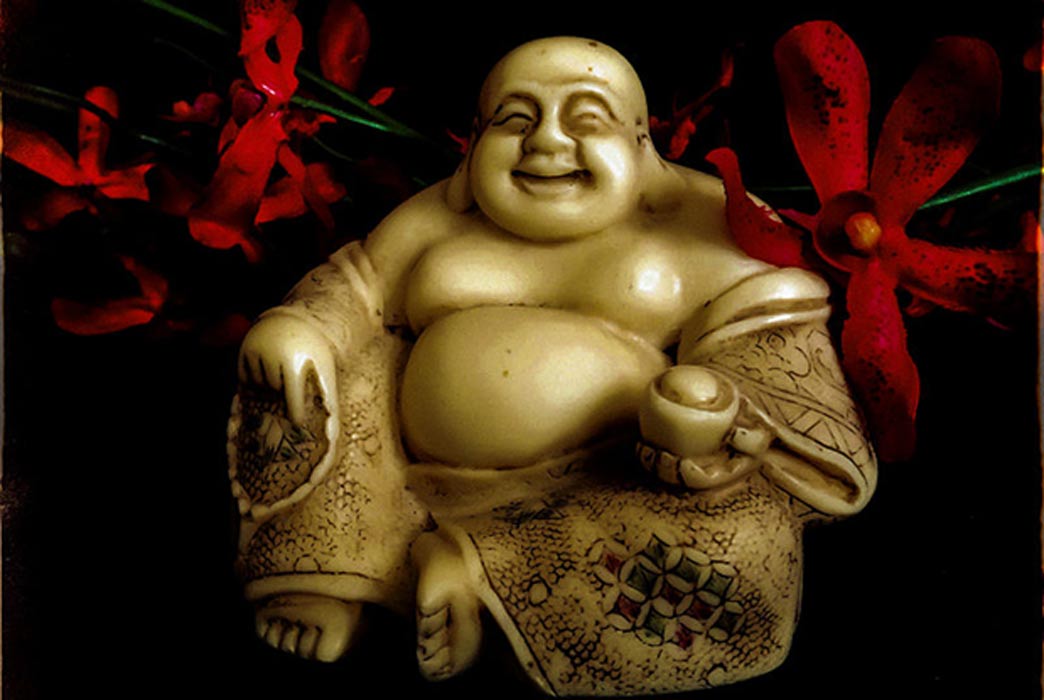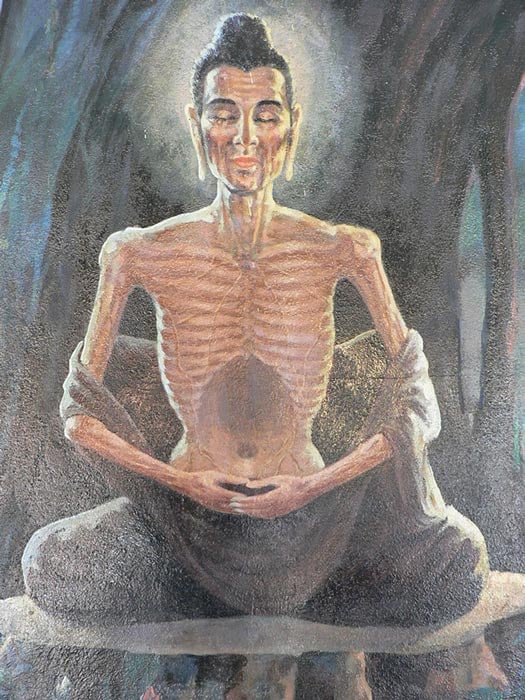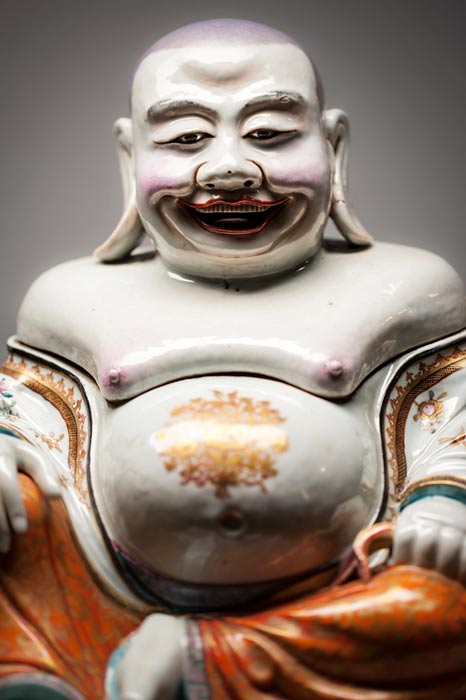
The Laughing Buddha: The Eccentric Monk, God of Plenty and Patron of Bartenders
Siddhartha Gautama, known as the Buddha, was born in 6 BC, in what is now modern Nepal. He lived the comfortable life of a young prince until one day he ventured out into the world and was confronted with the reality of the inevitable suffering of life. He left his kingdom to lead an ascetic life, submitting himself to rigorous ascetic practices for the next six years, refusing food and nearly starving himself to death.

Buddha undertaking extreme ascetic practices before his enlightenment. (CC BY-SA 3.0)
Realizing that physical austerities were not the means to achieve liberation, he soon turned to the Middle Path—a path of balance rather than extremism. He attained enlightenment, and for the remainder of his eighty years, the Buddha taught other sentient beings reach enlightenment.
In trying to conjure an image of the Buddha after hearing this story, one might picture a simple, contemplative man with a serene smile and, especially after his time as a starving ascetic, possibly slightly malnourished. Indeed, in India, Nepal and throughout Southeast Asia, Buddha is commonly depicted as tall, slender and serene. However, we are also familiar with the image of the “Fat Buddha”, “Laughing Buddha” or “The Happy Chinaman” – a short, well-fed, jolly man whose belly one can rub for good luck. This figure is popular in China and those areas to which Chinese cultural influence spread. Artwork of him from past to present shows him laughing gleefully – a stark contrast with the legendary Buddha. The Laughing Buddha is often conflated with the historical Buddha in spite of the distinct visual differences in their depictions.
- Mini Golden Coffin Found in Crypt May Hold Skull Bone of Buddha
- Baku: The Legend of the Dream Eater
- Ancient Persian Inscriptions Link a Babylonian King to the Man Who Became Buddha
This figure is known as Budai, said to be based on an eccentric Chinese monk who lived in 10 CE, sixteen centuries after the life of Siddhartha Gautama. His life, or rather what little we know of his life, has become a popular subject in Chinese folklore, and his image is well-known as the representation of abundance and contentment.

Sculpture of Budai. (Public Domain)
The Buddhist Monk and the Uncertain Time of the Five Dynasties
The original stories of the Laughing Buddha centered on a monk named Ch'i-t'zu, or Qieci, who lived on Mount Siming in Mingzhou, Fenghua during the Later Liang Dynasty (907–923 CE), the first in the period of unrest called the Five Dynasties. The Five Dynasties is a period of time between the fall of the Tang Dynasty (907 CE) and the founding of the Song Dynasty (960 CE) when five would-be dynasties in Northern China followed one another in rapid succession.





